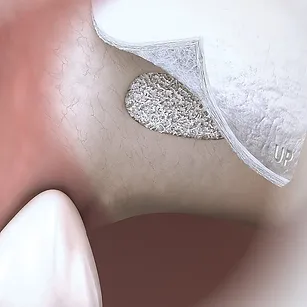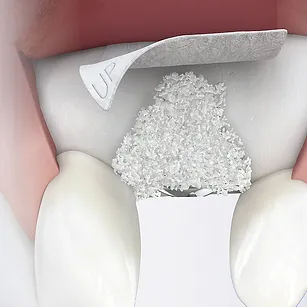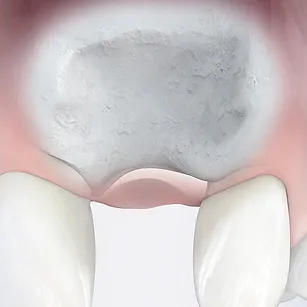Dental implants are the gold standard in tooth replacement, seamlessly blending function and beauty. These prosthetic tooth roots are expertly placed into the jawbone, providing a strong foundation for crowns, bridges, or dentures. Designed for those who seek the pinnacle of oral restoration, dental implants offer a sophisticated solution for permanent tooth loss. From ancient civilisations to modern breakthroughs, the story of dental implants is a tale of evolution.
In Ancient Egypt, gold adorned wooden supports to create false teeth, while seashell fragments found a purpose in Mayan culture. Fast forward to the 20th century, and a revolutionary discovery by Swedish orthopaedic surgeon Per-Ingvar Brånemark transformed the field. Titanium implants, now synonymous with excellence, were revealed to fuse seamlessly with bone tissue. This osseointegration revolutionised dental implant technology, eliminating the need for traditional screws and attachments.
Dental implants are biocompatible grafts implanted into the jawbone to support a replacement tooth or teeth. They consist primarily of three elements:
A biocompatible substance, such as titanium, is used to create the implant post, which serves as the implant’s structural support. It is put into the jawbone and left to osseointegrate or fuse with the bone. As it guarantees that the implant is firmly secured in the jawbone, this is a crucial stage in the implant procedure.
Here’s the connector. It links the implant post to your new tooth. Crafted from metals like gold or titanium, it’s custom-made to fit your unique mouth, seamlessly joining everything together.
The star of the show! This is the visible part – your new tooth. Created to look and feel like the real deal, it’s attached to the abutment, giving you a natural and permanent replacement for missing teeth.

The periodontist assesses your overall health, ensuring you’re a suitable candidate for implants. X-rays and jawbone scans follow, revealing the bone’s quality and quantity, essential for implant placement. For a closer view, a cone beam computed tomography (CBCT) scan might be recommended, especially if gum issues or bone density need special attention. These scans not only aid precision but also help identify potential nerve or sinus concerns. Your dentist’s meticulous planning guarantees a seamless and informed implant experience, paving the way for your confident smile transformation.
Once the periodontist has decided you are a good candidate for implant treatment, they will schedule surgery to insert the implants. During the surgery, the dentist will make a cut in the gum tissue and drill a hole into your jawbone. The implant post is then secured within this cavity, initiating the natural process of osseointegration that binds implant and bone, typically spanning 30 to 60 minutes. In cases of multiple implants, precision reigns supreme with the use of surgical guides and custom tools that ensure impeccable placement by guiding the dentist’s drill, resulting in a journey that’s both accurate and seamless.
Once the implant post is placed, your dentist gently concludes by repositioning the gum tissue. The captivating interlude of osseointegration then takes centre stage – a seamless partnership between implant and bone, unfolding over 2 to 6 months as healing orchestrates. During this phase, caution is your guide: refrain from chewing on the implant’s side, allowing its union to flourish. The dentists might prescribe antibiotics, nurturing healing and preventing infection.
The dentist will set the abutment once the implant has osseointegrated. The prosthetic tooth or teeth and the implant post are connected by a connector called an abutment. Typically, this phase takes 30 minutes. The abutment is commonly constructed out of zirconia or titanium and is designed specifically for each patient’s mouth and the kind of replacement tooth or teeth that will be utilised.
After placing the abutment, the dentist will create a mould of your mouth and send it to a dental laboratory. A custom-made prosthetic tooth or teeth will be manufactured in the dental laboratory and affixed to the abutment, and it typically takes two to three weeks. Porcelain, composite resin, or zirconia are just a few examples of materials that can be used to create prosthetic tooth or teeth. The kind of material utilised will depend on the specific requirements and preferences of the patient.
Once the replacement tooth or teeth are ready, the dentist will secure them in your mouth. This process is quick and painless. Once the occlusion (the way your teeth come together when you bite) has been adjusted, the dentist will check to see if the prosthetic tooth or teeth are comfortable. Following the placement of the final restoration, you must maintain your dental implants the same way you would your natural teeth. This entails seeing your dentist for routine exams and cleanings, as well as brushing and flossing two times every day.
If you are considering dental implants and have a history of gum disease, or if your jawbone is not dense enough to support implants on its own, the dentist may recommend bone grafting or bone regeneration. These procedures can help improve dental implants’ success rate and restore your smile.



Bone grafts are performed to increase the jawbone’s bone density. This is typically required if the jawbone is not thick enough to sustain dental implants on its own. Bone grafts can be extracted from the patient’s own body (autografts), from a cadaver (allografts), or from a synthetic substance (alloplastic grafts).
Guided bone regeneration (GBR) is a surgical method that applies a barrier membrane to keep soft tissue from invading a bone transplant. This enables the graft to grow new bone in regions with insufficient bone to support a dental implant. GBR is commonly used when the alveolar ridge has a dehiscence or fenestration defect.
In the realm of advanced dental techniques, Guided Bone Regeneration (GBR) emerges as a transformative procedure. The process commences with the dentist creating a small flap in the gum tissue, providing access to the area with bone deficiency. With surgical finesse, a meticulously chosen bone graft is placed within this area and enveloped by a specialised barrier membrane. This membrane, securely anchored using sutures or tacks, stands as a protective guardian, preventing soft tissue interference while facilitating optimal bone healing. Revered for its robust success rate, GBR transcends mere functionality, extending its influence to enhance the aesthetics of the smile.
 Janev2023-09-03I was referred to Dr Leo after 3 dental professionals had somehow missed out on diagnosing my gum problems. He was excellent. Calm, professional, experienced and very good at his job. He immediately found out the problem and worked out a treatment plan and home care strategies. Together they worked and my gum problems have greatly improved. I am very impressed and very grateful. Dr Leo knows his stuff and on the basis of my very positive experience, I highly recommend him. He has very good staff and a happy clinic which is a pleasure to visit
Janev2023-09-03I was referred to Dr Leo after 3 dental professionals had somehow missed out on diagnosing my gum problems. He was excellent. Calm, professional, experienced and very good at his job. He immediately found out the problem and worked out a treatment plan and home care strategies. Together they worked and my gum problems have greatly improved. I am very impressed and very grateful. Dr Leo knows his stuff and on the basis of my very positive experience, I highly recommend him. He has very good staff and a happy clinic which is a pleasure to visit Phyl Lobl2023-08-31Dr Liu at the Gum and Dental Implant centre has surpassed my expectations by providing expert technique in giving me restored dental health. His work is backed up by a professional team. Phyl Lobl
Phyl Lobl2023-08-31Dr Liu at the Gum and Dental Implant centre has surpassed my expectations by providing expert technique in giving me restored dental health. His work is backed up by a professional team. Phyl Lobl Abimbola Bello2023-03-17Very lovely and professional team. Extremely friendly. Dr Liu is a very good doctor and takes time to walk you through what needs to be done. Thanks you
Abimbola Bello2023-03-17Very lovely and professional team. Extremely friendly. Dr Liu is a very good doctor and takes time to walk you through what needs to be done. Thanks you janice dolbel2023-03-14I was a bit nervous at the beginning, but Dr Leo is a very kind gentleman, very experienced in his work. His team, Kelvin, Maria and Lexie are great to deal with. The facilities are spotless. Thank you all for making my experience less stressed. Janice Dolbel.
janice dolbel2023-03-14I was a bit nervous at the beginning, but Dr Leo is a very kind gentleman, very experienced in his work. His team, Kelvin, Maria and Lexie are great to deal with. The facilities are spotless. Thank you all for making my experience less stressed. Janice Dolbel. Erica Dunn2022-12-08Excellent gum cleaning experience. Very happy :)
Erica Dunn2022-12-08Excellent gum cleaning experience. Very happy :) Pinky Ng2022-11-28I have been visiting this specialist since grand opening. I am really appreciated their ongoing friendly welcoming, high quality services and professional consultation. I would highly recommend anyone who is looking for an outstanding dental specialist! They really doing a great job!
Pinky Ng2022-11-28I have been visiting this specialist since grand opening. I am really appreciated their ongoing friendly welcoming, high quality services and professional consultation. I would highly recommend anyone who is looking for an outstanding dental specialist! They really doing a great job! Rena2022-11-18Dr Leo Liu is fantastic! Highly skilled, passionate and caring. This is my first time experiencing gum treatment and it's been amazing. Despite being anxious about dental visits in general, I quickly realised that I was in highly competent hands and the procedure was as pleasant as can be. Should I require further treatment of this type, I will return to Dr Leo
Rena2022-11-18Dr Leo Liu is fantastic! Highly skilled, passionate and caring. This is my first time experiencing gum treatment and it's been amazing. Despite being anxious about dental visits in general, I quickly realised that I was in highly competent hands and the procedure was as pleasant as can be. Should I require further treatment of this type, I will return to Dr Leo
Are gaps in your smile a concern? Count on GUM & DENTAL IMPLANT CENTRE to restore your radiant smile. Connect with us now to arrange a consultation and take the first step towards reclaiming your confident smile!